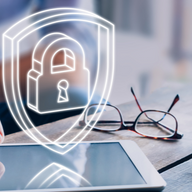Safe in a Storm: Protecting Your Customers

Customer Services & Relations
143 week ago — 5 min read
The Philippines is one of the world’s most disaster-prone countries and when typhoons, floods, earthquakes, and landslides strike, every aspect of society is placed at risk. While one cannot control the forces of nature, one can put into place measures to mitigate the worst effects. Protecting one’s business in such circumstances can be a huge challenge but if one knows how to plan and prioritize, one can be better prepared to face these obstacles.
This is #SafeInAStorm SIKAP’s series about protecting your business during disaster-related disruptions! These blogs will provide practical tips on boosting your disaster resilience in the different aspects of your business.
Customer communication is an important part of any successful business. Maintaining strong relationships with your clients will ensure the longevity and stability of your enterprise. And communication with customers is even more important during any kind of crisis as it is a means to protect them.
Companies need to share as much relevant information with their customers during calamities because customers are depending on them to continue to provide the services they have signed up for. More than simply continuing operations, effective customer communication during disasters also demonstrates the companies’ commitment to protecting their client base and to even saving lives.
Make sure to include the following information when you are communicating with your customers during crises:
- What products or services you will not be able to provide at the expected time
- What alternate options are available for customers
- When can they expect normal operations restored
- Any compensation you plan to make
Here are some key things to remember when conveying messages to your customers during a calamity:
- Be Accessible One of the biggest sources of fear and uncertainty during a crisis is the lack of access to vital information. In line with this, make sure that all possible channels of communication are open such as telephones, mobile phones, social media, emails, group chats, or any others.
- Be Accurate Fake news and incomplete information can be doubly dangerous during a disaster. Do your research and only communicate information from news agencies, official government reports, and other reliable sources.
- Be Quick Real-time updates are always needed during a crisis and if your company can provide information in a timely manner, your customers will be very appreciative. Verify that the information is valid first but as soon as you’re sure, don’t hesitate to spread the word!
- Be Concise People don’t have time to read an essay when they’re in the middle of a calamity. Information must be direct-to-the-point and should only include all relevant details with no unnecessary embellishments.
- Be Consistent Make sure to share the same information across all communication channels. Customers might get confused if they are getting a different story on different platforms and it will only add to their stress which is what you are trying to avoid.
- Be Empathetic Try your best to understand what your customers are going through, all the extreme emotions of stress and fear that they are suffering as a result of the crisis. This will better guide you to craft messages that are helpful, informative, reassuring, and sensitive to the needs of the recipients.
So those are a few ways to effectively keep your customers in the loop while there is an ongoing disaster. Communicate with your customers properly and they will thank you for it!
Stay tuned for more practical tips and advice on how you can keep your business #SafeInAStorm #SIKAPMSME #ResilientMSMES #ResilientPH
To explore business opportunities, link with me by clicking on the 'Invite' button on my eBiz Card.
Image source: canva.com
Disclaimer: The views and opinions expressed in this article are those of the author and do not necessarily reflect the views, official policy or position of GlobalLinker
View SIKAP 's profile
Other articles written by SIKAP By PDRF
92 week ago
Safe in a Storm: Protecting Your Assets
117 week ago
Safe in a Storm: Protecting Your Data
121 week ago
Most read this week
Trending
UnionBank GlobalLinker Linker.store Contest
Ecommerce 115 week ago













Comments
Please login or Register to join the discussion